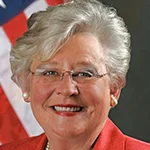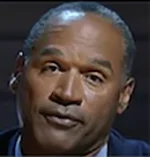 |
| Robert Dilenschneider |
The Labor Day that Americans will mark on Sept. 7 will be unlike any in our lifetimes. The pandemic that grips the entire world means the cancellation of normal celebrations, like the parades that have been such joyful celebrations in big cities and small towns across the nation.
And now, of course, we are moving toward Nov. 3 and a presidential election that will shape the period ahead for all of us—and for the world—in ways we never anticipated.
Picnics, backyard cookouts and other such gatherings may go on in many places, but if health precautions are observed, they’ll be far smaller in size, with masks worn most of the time and physical distancing observed.
And the fall sports that so many of us look forward to will be missing their usual fanfare with gatherings and tailgating. Life will go on without spectators in the stands for the World Series in October, college football on Saturdays and the pro games on Sunday afternoons and Monday nights.
Beyond all the things we will miss, this Labor Day will probably give millions of Americans a strange mixture of feelings: On the one hand, we will still be commemorating the men and women whose labor built our great country. On the other hand, such a truncated holiday is bound to intensify our feelings of loss and remind us of how suddenly it all came about.
But Americans are the most resourceful, resilient and enterprising people on Earth, and so we should all be confident that our nation is going to come back stronger than ever. The labor that we celebrate on Labor Day made us great, and it is going to keep right on doing that through the pandemic and into the future.
Even as we look to the future, it’s always fascinating to look back in history to learn how institutions like Labor Day got started:
The first Labor Day was celebrated on Sept. 5, 1882, in New York City. In 1884, the first Monday in September was chosen to mark the occasion, and New York’s Central Labor Union urged its counterparts in other cities to follow the example. The idea caught on and by 1894 more than half the states were observing a “workingmen’s holiday.” In June of that year, President Grover Cleveland signed legislation designating the first Monday in September as Labor Day.
In the 1800s, at the height of the Industrial Revolution the average American worked 12 hours a days, 7 days a week. Despite restrictions in some states, children as young as 5 worked in mills and factories, many of them facing seriously unsafe conditions.
Some protests turned violent, including the infamous Haymarket Riot of 1886. But change did come about. The Adamson Act of 1916 that established an eight-hour work day was the beginning of a new era of rights and protections for working people, including, finally, the abolition of child labor in 1938.
Our best wishes to you and all of yours for a happy and especially safe Labor Day 2020.
***
Robert L. Dilenschneider is founder and chairman of The Dilenschneider Group, a global public relations and communications consulting firm headquartered in New York City. The former CEO of Hill and Knowlton, Inc., he is also author of more than a dozen books, including the best-selling “Power and Influence.”


 Southern governors claim they know what's best for their working class, and it's not pay raises... A Ukrainian human rights group played a key role in convincing House Speaker Mike Johnson to hold a vote to send arms to Ukraine, Israel and Taiwan... Trump Media & Technology Group blames short-selling and not lousy outlook for its stock slump.
Southern governors claim they know what's best for their working class, and it's not pay raises... A Ukrainian human rights group played a key role in convincing House Speaker Mike Johnson to hold a vote to send arms to Ukraine, Israel and Taiwan... Trump Media & Technology Group blames short-selling and not lousy outlook for its stock slump. The techniques deployed by OJ Simpson's defense team in the 'trial of the century' served as a harbinger for those used by Donald Trump... People worry about the politicization of medical science just as much as they fret about another pandemic, according to Edelman Trust Barometer... Book bans aren't restricted to red states as deep blue Illinois, Connecticut and Maryland challenged at least 100 titles in 2023.
The techniques deployed by OJ Simpson's defense team in the 'trial of the century' served as a harbinger for those used by Donald Trump... People worry about the politicization of medical science just as much as they fret about another pandemic, according to Edelman Trust Barometer... Book bans aren't restricted to red states as deep blue Illinois, Connecticut and Maryland challenged at least 100 titles in 2023. The NBA, which promotes legalized gambling 24/7, seems more than hypocritical for banning player for placing bets... Diocese of Brooklyn promises to issue press release the next time one of its priests is charged with sexual abuse... Truth Social aspires to be one of Donald Trump's iconic American brands, just like Trump University or Trump Steaks or Trump Ice Cubes.
The NBA, which promotes legalized gambling 24/7, seems more than hypocritical for banning player for placing bets... Diocese of Brooklyn promises to issue press release the next time one of its priests is charged with sexual abuse... Truth Social aspires to be one of Donald Trump's iconic American brands, just like Trump University or Trump Steaks or Trump Ice Cubes. Publicis Groupe CEO Arthur Sadoun puts competition on notice... Macy's throws in the towel as it appoints two directors nominated by its unwanted suitor... The Profile in Wimpery Award goes to the Ford Presidential Foundation for stiffing American hero and former Wyoming Congresswoman Liz Cheney.
Publicis Groupe CEO Arthur Sadoun puts competition on notice... Macy's throws in the towel as it appoints two directors nominated by its unwanted suitor... The Profile in Wimpery Award goes to the Ford Presidential Foundation for stiffing American hero and former Wyoming Congresswoman Liz Cheney. JPMorgan Chase chief Jamie Dimon's "letter to shareholders" is a must-read for PR people and others interested in fixing America and living up to its potential... Get ready for the PPE shortage when the next pandemic hits... Nixing Netanyahu. Gaza carnage turns US opinion against Israel's prime minister.
JPMorgan Chase chief Jamie Dimon's "letter to shareholders" is a must-read for PR people and others interested in fixing America and living up to its potential... Get ready for the PPE shortage when the next pandemic hits... Nixing Netanyahu. Gaza carnage turns US opinion against Israel's prime minister.


 Have a comment? Send it to
Have a comment? Send it to 
No comments have been submitted for this story yet.